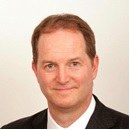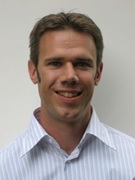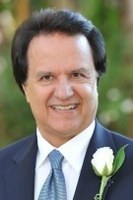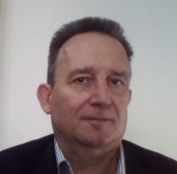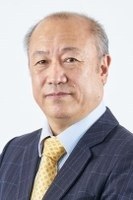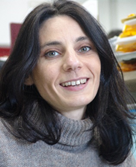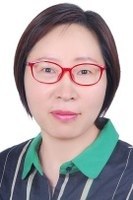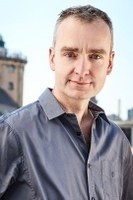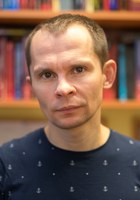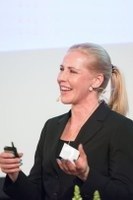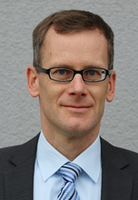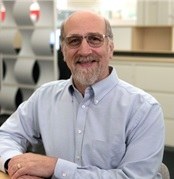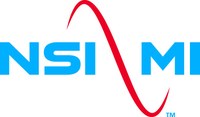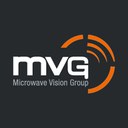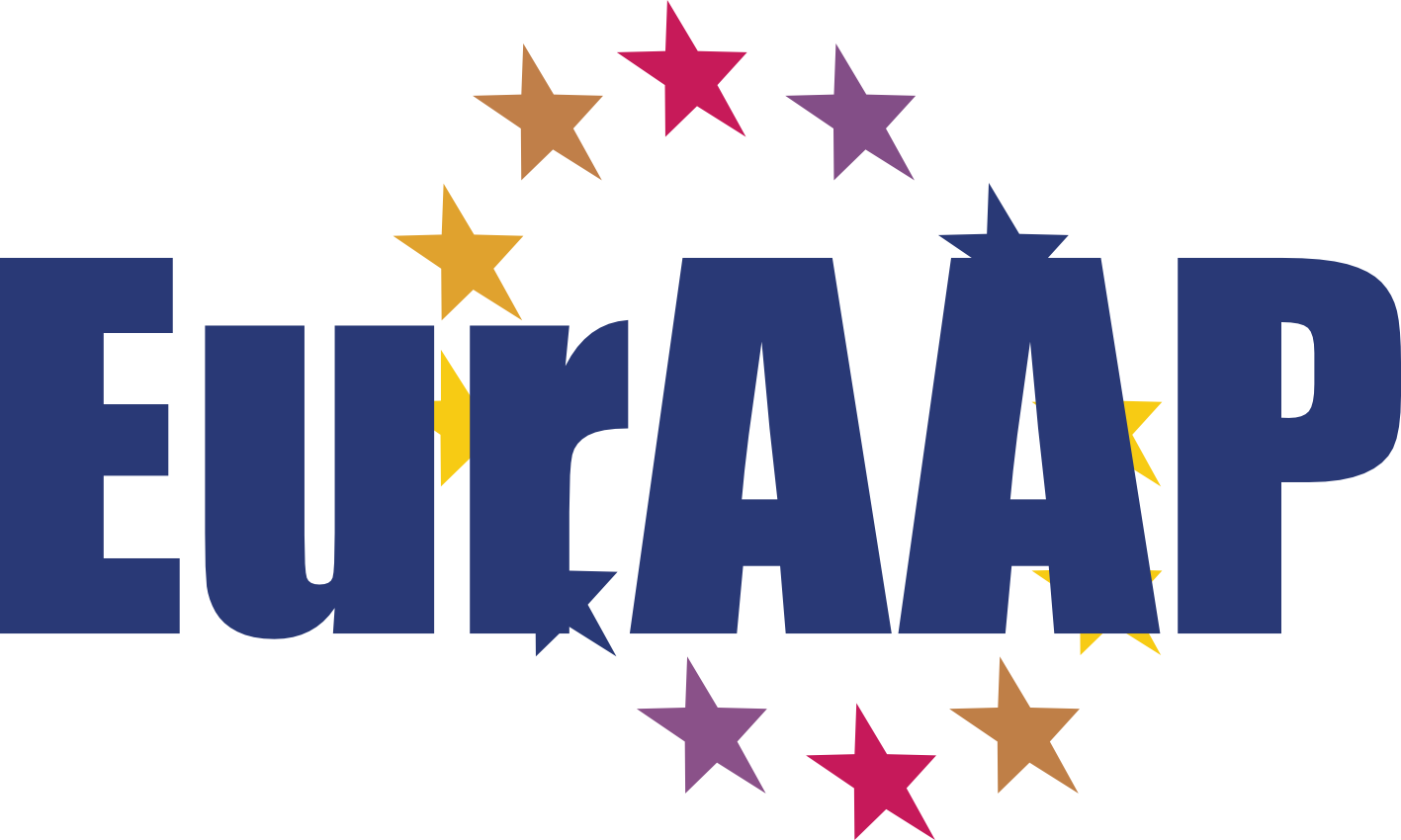Invited and Keynote Speakers
Keynote Speakers |
|
|
|
Dr. Colin Willcock, 5G Infrastructure Association, Brussels European research plans beyond 5G; the Smart Networks and Services partnership |
|
|
Professor Fredrik Tufvesson, Lund University, Sweden Propagation and Channel modelling for automotive environments Dependable vehicular communication is seen as an enabler for increased traffic safety and more efficient transportation solutions. It is a must for cooperative vehicles, and sometimes claimed to be so also for autonomous vehicles. In the talk we discuss vehicular channel characteristics and how these affect the possibilities to achieve dependable communication in this highly dynamic and challenging environment. We look at detailed scatterer behavior and the possibility for highly accurate multipath assisted positioning. We discuss different channel modelling approaches and wrap up with an outlook of future dependable vehicular communication in the millimeter wave bands. |
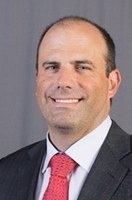 |
Professor Robert Heath, North Carolina State University, USA MIMO communication is an important component of cellular networks. The way that MIMO is used has undergone a transition, led in part by the need to support millimeter wave communication. In this talk, I will review how MIMO changed in the evolution of 4G to 5G. I will discuss the different MIMO architectures and will reflect on why 5G ended up supporting a beam-based design. To conclude, I will describe alternatives and speculate on how MIMO will continue to evolve in later releases of 5G and towards 6G. |
Invited Speakers |
|
|
|
Professor Yahya Rahmat-Samii, UCLA, US Modern Antenna Near-Field Measurements Help Understanding Electromagnetic Theorems, Sampling Techniques, FFT and Instrumentations |
|
|
Professor Branko Kolundzija, University of Belgrade/ WIPL-D, Serbia Branko M. Kolundžija (F’05) was born in Zenica, Yugoslavia, in 1958. He received the B.Sc., M.Sc., and D.Sc. degrees from the University of Belgrade, Serbia, in 1981., 1986., and 1990., respectively. In 1981., he joined the School of Electrical Engineering, University of Belgrade, where he is currently a Full Professor for courses “Electromagnetics” and “Antennas and propagation”. He has authored or co-authored more than 2 monographs, a chapter in a monograph, 3 software packages, 1 textbook, 40 journal articles, and 200 articles at international conferences. His current research interests include numerical problems in electromagnetics, especially those applied to antennas and microwave components. He is the chief architect of the WIPL-D software suite. 5 Generations of Higher Order Bases: General Approach for Highly Accurate and Efficient EM ModelingFull-wave simulation of arbitrary structures, whose parts are made of homogenous, linear and isotropic materials, can be performed by MoM/SIE (Method of Moments solution of Surface Integral Equations). From the very beginning of MoM/SIE development researchers have explored the possibilities to reduce the resources needed for simulation, to enhance the accuracy of results, and to expand the limits of the maximum electrical size and complexity of the solvable problem. Using HOBFs (Higher Order Basis Functions) of polynomial type instead of low order ones, the number of unknowns required along wires, metallic plates, and dielectric surfaces is reduced from 10/λ, 200/ λ2, and 400/ λ2 to 4/λ, 30/ λ2, and 60/ λ2, respectively (1st Generation of HOBFs). Development of algorithms suitable for out-of-core solution and parallelization on CPUs and GPUs enables acceleration of simulation up to two orders of magnitude, so that dense matrix equation of 100,000 unknowns (1 million unknowns) can be directly solved in a few minutes (during the day) on the desktop PC (2nd Generation of HOBFs). Combination of novel singularity extraction and singularity cancellation techniques gives the possibility to evaluate the MoM matrix elements up to machine precision. Balancing source/field quantities in SIEs and basis/test functions in such MoM matrix extends the limits related to: a) low frequency breakdown, b) very low/high contrast materials, and c) multiscale problems (3rd Generation of HOBFs). Maximal orthogonalization of HOBFs, using two-step Gramm-Schmidt procedure, results in low condition number of the MoM matrix, practically independent on the HOBFs order. If such max-ortho bases and corresponding matrix elements are evaluated using recurrent formulas based on Legendre polynomials, the maximum applicable HOBF’s order can be extended for an order of magnitude, e.g. from 8 to 64. In this way, practically unlimited p-refinement is enabled (4th Generation of HOBFs). So, what is the next step? What is the 5th generation? We are currently working on it, and the results will be presented in the end of this invited presentation. |
|
|
Professor Zhang Yue Ping, Nanyang Technological University, Singapore Prof ZHANG was a Member of the IEEE AP-S Field Award Committee (2015-2017), an Associate Editor of the IEEE Transactions on Antennas and Propagation (2010-2016), and the Chair of the IEEE Singapore MTT/AP joint Chapter (2012). Prof Zhang was conferred the Distinguished Scholar affiliated to Shanghai Jiao Tong University (2012), China. He was awarded a William Mong Visiting Fellowship (2005) and appointed as a Visiting Professor (2014) by the University of Hong Kong, China. Prof ZHANG has published numerous papers, including two invited and one regular papers in the Proceedings of the IEEE and one invited paper in the IEEE Transactions on Antennas and Propagation. He is the only Chinese radio scientist who has managed to publish a historical article in an English learned journal such as the IEEE Antennas and Propagation Magazine. He received the Best Paper Award from the 2nd IEEE/IET International Symposium on Communication Systems, Networks and Digital Signal Processing, July 18–20, 2000, Bournemouth, U.K., the Best Paper Prize from the 3rd IEEE International Workshop on Antenna Technology, March 21–23, 2007, Cambridge, U.K., and the Best Paper Award from the 10th IEEE Global Symposium on Millimetre-Waves, May 24–26, 2017, Hong Kong, China. He received the Sergei A. Schelkunoff Prize Paper Award from the IEEE AP-S in 2012. Prof Zhang holds 7 US patents. He has made pioneering and significant contributions to the development of AiP technology. He received the John Kraus Antenna Award from the IEEE AP-S in 2020. His current research interests include the development of antenna-on-chip (AoC) technology for very large-scale antenna integration and characterization of chip-scale propagation channels at terahertz for wireless chip area network (WCAN). Antenna-in-package (AiP) TechnologyAntenna-in-package (AiP) technology integrates an antenna or antennas with a radio or radar transceiver die (or dies) into a standard surface mount package. AiP technology well balances performance, size, and cost. Hence, it has been widely adopted by chip makers for highly integrated radios and radars. It is the antenna and packaging technology for the fifth generation (5G) cellular networks and beyond operating in the millimetre-wave (mmWave) bands. This talk will provide an overview of the development of AiP technology. It will consider antennas, packages, and interconnects for AiP technology. It will show that the antenna choice is usually based on those popular antennas that can be easily designed for the application and that the materials and processes choices involve tradeoffs among constraints, such as electrical performance, thermal-mechanical reliability, compactness, manufacturability, and cost. This talk will also show a probe-based setup to measure mmWave AiP impedance and radiation characteristics. It goes on to highlight flip-chip AiP (FC-AiP) and fan-out AiP (FO-AiP) with examples. |
|
|
Dr. Enrica Martini, University of Siena, Italy Metasurface (MTS) antennas have emerged in the last decade as a flexible and innovative solution for the design of high-performance planar antennas with pencil beam or shaped radiation pattern. They operate on an interaction between a cylindrical surface wave (SW) excited by an isotropic radiator and an MTS having a spatially modulated equivalent impedance. The periodic modulation of the boundary conditions transforms the SW launched by the feed into a leaky wave, thus, generating a radiating aperture. This results in a lightweight and low-profile structure, characterized by low losses, simple feeding structure, low-cost manufacturing and versatile radiation characteristics. In fact, by acting on the impedance pattern it is possible to obtain a unique control of the phase, amplitude and polarization of the aperture field, thus, molding the radiation pattern with a single point excitation. This talk will provide an overview of this technology, starting from the basic working principles to arrive at practical designs and realization. It will be shown how the latest developments in analytical and numerical models and design procedures allows today for an extreme control of the pattern shape, field polarization and amplitude tapering. Several realizations of antennas designed for different applications (including very high gain pencil beams with low side lobes and isoflux-shaped pattern) will be presented. The application of this technology for beam scanning and pattern reconfigurability will be also discussed. |
|
|
Professor Jianhua Zhang, BUPT, China Jianhua Zhang, received her Ph.D. degree in circuit and system from Beijing University of Posts and Telecommunication (BUPT) in 2003 and now is professor of BUPT. She has published more than 200 articles in referred journals and conferences and 40 patents. She received several paper awards, including 2019 SCIENCE China Information Hot Paper, 2016 China Comms Best Paper, 2008 JCN Best Paper etc. She received two national novelty awards for her contribution to the research and development of Beyond 3G TDD demo system with 100Mbps@20MHz and 1Gbps@100MHz respectively. She received the second prize for science novelty from Chinese Communication Standards Association for her contributions to ITU-R 4G (ITU-R M.2135) and 3GPP Relay channel model (3GPP 36.814). From 2012 to 2014, she did the 3 dimensional (3D) channel modeling work and contributed to 3GPP 36.873 and is also the member of 3GPP "5G channel model for bands up to 100 GHz". She was the Drafting Group (DG) Chairwoman of ITU-R IMT-2020 channel model and led the drafting of IMT.2412 Channel Model Section. Her current research interests include 5G and 6G, artificial intelligence, data mining, especially in massive MIMO and millimeter wave channel modeling, channel emulator, OTA test and etc. Webpage : www.zjhlab.net Channel Measurements and Models for 6G: Views and ProgressWith the commercialization of fifth generation (5G) worldwide, sixth generation (6G) research has been launched to meet demands for higher system capacity, higher data rate, lower latency, ubiquitous 3D coverage, heterogeneous connections and so on for future services. Channel properties determine the ultimate performance limit of wireless communication systems. Thus, conducting channel research is a prerequisite to designing wireless communication systems, which plays an essential role in fairly and equally evaluating the candidate radio interface technologies. In this paper, several prospective technologies for 6G, such as terahertz (THz) communication, industrial internet of things (IIoT), space-air-ground integrated network (SAGIN), and machine learning are introduced. Then, we present some of our channel measurements and models for 6G. This paper aims to provide enlightening guidance for subsequent research of 6G channel modeling. |
|
|
PhD, CTO Erik Jørgensen, Ticra, Denmark Computational Electromagnetics in Space Computational Electromagnetics (CEM) provides an indispensable toolset for antenna design and performance verification. In this talk, we focus on the modelling challenges arising when designing satellite antennas and platforms, with typical application areas within high-throughput telecommunication systems or Earth observation. Antenna design for space applications imposes very stringent requirements on the CEM algorithms, e.g., a predicted gain accuracy better than a few hundreds of a dB and a dynamic range exceeding 100 dB. Further, the accuracy must be maintained for antennas that are electrically large, e.g., several hundred wavelengths, or platforms exceeding 1000 wavelengths in size. Such extreme accuracy requirements are typically not encountered outside the space segment, implying that specialized algorithms must be developed. We present a review of several CEM algorithms developed particularly for space applications. This includes multiple integral equation methods based on higher-order discretisation schemes, as well as an efficient acceleration method providing a dramatic reduction of the memory and CPU requirements. The special requirements relevant for space applications also imply that extremely fast algorithms are needed for specific classes of antenna problems. Such dedicated algorithms are needed to allow numerical optimization of a very large number of degrees of freedom, necessitating that the antenna performance can be evaluated in seconds without compromising the accuracy. We discuss multiple dedicated solvers, hybridization of solvers, and large-scale optimisation problems. Finally, we apply techniques for quantification of uncertainties when realising antennas with finite manufacturing tolerances. The capabilities of the algorithms are illustrated with practical examples. |
|
|
Professor Claude Oestges, Université Catholique de Louvain-la-Neuve, Belgium Claude Oestges received the Electrical Engineering degree and the PhD degree in Applied Science from the Université catholique de Louvain (UCLouvain, Louvain-la-Neuve, Belgium), in 1996 and 2000, respectively. His doctoral research dealt with propagation models and performance prediction methods for LEO satellite networks. From January to December 2001, Claude Oestges joined, as a post-doctoral scholar, the Smart Antennas Research Group (Information Systems Laboratory) of Stanford University (California, USA). He was involved in the development of MIMO multipolarized channel models for broadband wireless access in the field of G2 MMDS technology (with Sprint, Inc.). From October 2001 to September 2005, Claude Oestges was a post-doctoral fellow of the Belgian National Science Foundation (Fonds de la Recherche Scientifique, FRS-FNRS). From October 2005 to October 2014, he was Associate Professor at UCLouvain and FRS-FNRS Senior Research Associate.Since October 2014, Claude Oestges is Professor at UCLouvain and FRS-FNRS Honorary Senior Research Associate. His research interests cover wireless and satellite communications, with a focus on the propagation channel and its impact on system performance. From 2016 to 2020, he has been chairing COST CA15104 "Inclusive Radio Communication Networks for 5G and Beyond", known as IRACON. Claude Oestges is a Fellow of the IEEE, and a member of the Board of Directors of the European Association on Antennas and Propagation (EurAAP ). He previously served as Associate Editor for the IEEE Transactions on Antennas and Propagation and on Vehicular Technology. He is the author or co-author of four books, and more than 200 papers in international journals and conference proceedings. He was the recipient of the IET Marconi Premium Award in 2001 and of the IEEE Vehicular Technology Society Neal Shepherd Award in 2004 and 2013. Propagation Models for Inclusive Radio Communication Networks. The demand for mobile connectivity is continuously increasing and mobile and wireless communications serve not only very dense populations of mobile phones and nomadic computers, but also the expected multiplicity of devices and sensors located in machines, vehicles, health systems and city infrastructures. The future generations of radio communication networks are expected to implement technologies for supporting wireless connectivity for any rates, type of communicating units, and scenario. Whereas spectral and spatial efficiency are key challenges, in addition to constraints such as energy consumption, latency, mobility, adaptability, heterogeneity, coverage and reliability, the multi-dimensional radio channel remains central in such contexts. Multiple antenna systems (MIMO), interference recognition and management as well as cooperation among separate network nodes are inherently multi-dimensional techniques and should always be designed with a proper knowledge not only of the channel, but also of the interference. In addition, the use of higher frequency ranges (cm- and mm-waves) is investigated to address the spectrum shortage. Finally, new environments have emerged with the application of the wireless Internet of Things (IoT) in several areas. This communication aims to provide an overview of the latest trends in radio propagation, in particular in the context of inclusive radio communication networks. Going from recent radio channel measurements to current modeling techniques, the communication will include an overview of channel modelling results achieved within COST CA15104 Action (IRACON). Recent results in peer-to-peer, multi-link, vehicular and millimeter wave propagation will be described. Future research topics will eventually be briefly outlined. |
|
|
Professor Fernando Las-Heras, University of Oviedo, Spain New antenna measurement setups for non-accessible and on-board antennas. |
|
|
Professor Miloslav Capek received his Ph.D. degree in 2014, and was appointed Associate Professor in 2017, all from the Czech Technical University in Prague, Czech Republic. Miloslav is a senior member of the IEEE, a former EurAAP delegate (Region 8, 2015-2020), and an Associate Editor of IET Microwaves, Antennas & Propagation. He has been a grant holder and member of a research team for several national and international projects, including projects funded by the Czech Science Foundation, the Technology Agency of the Czech Republic, and European Cooperation in Science and Technology (COST ASSIST, COST VISTA). He leads the development of the AToM (Antenna Toolbox for MATLAB) package and serves as a vice-chair of the EurAAP “Software and Modeling” working group. He is the author or co-author of more than 100 journal and conference papers. His current research interests include the areas of electromagnetic theory, electrically small antennas, numerical techniques, and optimization. For detailed information see capek.elmag.org.
Characteristic Modes for Antenna Analysis and Synthesis From its humble beginning featuring only a few applications in scattering theory, characteristic mode decomposition has evolved into a well-established paradigm implemented as a powerful numerical method in contemporary EM simulation packages. The theory has attracted significant attention over the last 20 years and established itself as a unique tool providing additional physical insights into radiation mechanism. In recent years, there has been rapid progress in research related to the use of characteristic modes for the design, modeling and optimization of advanced and novel antenna systems. Systematic procedures using characteristic modes have been proposed for antenna design in a wide range of applications (MIMO, RFID, 4G/5G and beyond, IoT, body area networks, array antennas, etc.). The talk will review the properties of the characteristic modes and their advantages, as well as discuss recent breakthroughs, especially those focusing on novel features. Special emphasis will be placed on the extensions of the theory and its generalization. The talk will conclude with a discussion of open problems and future challenges. |
|
|
Professor Leena Ukkonen, Tampere University of Technology, Finland Backscattering-based wireless communication and power transfer to small biomedical implants |
|
|
Professor Christian Waldschmidt, University of Ulm, Germany Radar sensors in the millimeter wave range have become a standard sensor today for many applications like automotive or industrial sensing due to the high maturity of millimeter wave technology. Such sensors are available as single-chip solutions e.g. at 60, 77 and 122 GHz and are often set up as MIMO (multiple input multiple output) systems with several transmitters and receivers. The bandwidth and number of channels of the MIMO system determine the imaging quality of the sensors, whereby today's sensors achieve an angular separability typically in the range of a few degrees. The next big leap in innovation regarding image quality is the transition to radar networks in which several sensors cooperate. In this talk different approaches for the realization of such networks are presented. Incoherent networks, which are very easy to set up, are primarily more robust than individual sensor systems, have a larger field of view and allow e.g. to capture the full velocity vector of the targets. Coherent networks, on the other hand, with their sparse apertures, which can encompass the entire network, make it possible to significantly improve the angular separability. The key question here is how coherence can be created in the network without having to set up hardware connections between the sensors. The talk shows approaches for the generation of coherence and presents the image quality that can be achieved with them. |
|
|
Dr. Joel Dunsmore, Keysight Technologies, Santa Rosa, USA Since graduating from Oregon State University with an MSEE (1983), Joel Dunsmore has worked for Keysight Technologies (formerly Agilent and Hewlett-Packard) at the Santa Rosa Site. He received his Ph.D. from Leeds University in 2004. He is a Keysight R&D Fellow focused on component test. He was a principle contributor to the HP 8753 and PNA family of network analyzers, with recent work in non-linear test, including differential devices, and mixer measurements, as well as modulated and spectrum measurements. He has received 32 patents related to this work, and authored the “Handbook of Microwave Component Measurements, 2nd Edition (John Wiley, 2020)” Over-the-Air EVM measurements with a VNAThis talk will present latest results in over-the-air (OTA) measurements of an active phased-array antenna’s performance, focusing on the precision EVM measurement method introduced in 2020 at the German Microwave Conference (GeMic 2020), but now applied in an OTA environment. This method, using a wideband modulated source, and VNA as a receiver, provides a precisely calibrated input signal to the antenna-under-test and can characterize its performance for EVM and other non-linear attributes. Of particular interest is the ability to extend the dynamic range of the measurement through coherent time averaging, allowing the EVM of individual phase-array elements to be characterized in a situation where the signal would normally be lost in the noise floor using traditional methods. The paper will present measurements of a 64-element electronically steerable antenna in the 37-40 GHz band, measured on boresight, at various beam angles, and characterized also element by element, with comparison to traditional methods. |
